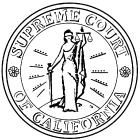California Supreme Court Rules on Employer Meal and Rest Break Obligations
Contact: Lynn Holton, Public Information Officer, 415-865-7726
April 12, 2012
Court Decides Employers Must Relieve Employees of All Duty During Meal Periods But Need Not Ensure They Perform No Work

San Francisco—Resolving uncertainty over the scope of an employer’s obligations to afford hourly employees meal and rest periods, the California Supreme Court concluded today that an employer’s obligation is to relieve its employees of all duty during meal periods, leaving the employees thereafter at liberty to use the period for whatever purpose they desire, but that an employer need not ensure no work is done.
On the related question concerning when meal periods must be provided, the court concluded a first meal break generally must fall no later than five hours into an employee’s shift, but an employer need not schedule meal breaks at five hour intervals throughout the shift.
These questions arose in Brinker Restaurant Corporation v. Superior Court, S166350, one of a number of meal and rest break class actions pending in the state. After the Brinker trial court certified classes of employees alleging the Brinker Restaurant Corporation had failed to provide meal and rest periods in the number and at the times required by state law, the Court of Appeal reversed and ordered each subclass vacated. The California Supreme Court accepted review and agreed to resolve lingering uncertainty over the nature of rest and meal period obligations and the suitability of such claims for class treatment.
In a unanimous opinion authored by Associate Justice Kathryn M. Werdegar, the court explained that neither state statutes nor the orders of the Industrial Welfare Commission (IWC) compel an employer to ensure employees cease all work during meal periods. Instead, under state law an employer must provide its employees an uninterrupted 30-minute duty-free period during which the employee is at liberty to come and go as he or she pleases. Absent a statutorily permissible waiver, a meal break must be afforded after no more than five hours of work, and a second meal period provided after no more than 10 hours of work.
On the question of rest periods, the court explained that under the IWC’s orders, employees are entitled to 10 minutes of rest for shifts from three and one-half to six hours in length, and to another 10 minutes rest for shifts from six hours to 10 hours in length. Rest periods need not be timed to fall specifically before or after any meal period.
As to the suitability of rest and meal period claims for class treatment, the court reversed in part, remanded in part, and affirmed in part the Court of Appeal’s rejection of class treatment. With respect to rest period claims, the court concluded plaintiffs had identified a theory of recovery suitable for class treatment. With respect to meal period claims, the Supreme Court remanded to the trial court for reconsideration of class certification in light of its clarification of the substantive law governing meal period claims. Finally, with respect to a third subclass—for claims that Brinker required off-the-clock work—the court affirmed vacation of class certification.
The principal opinion by Justice Werdegar was signed by Chief Justice Tani G. Cantil-Sakauye and Associate Justices Joyce L. Kennard, Marvin R. Baxter, Ming W. Chin, Carol A. Corrigan, and Goodwin Liu.
Justice Werdegar also issued a separate concurring opinion, joined by Justice Liu, addressing meal period class certification issues confronting the trial court on remand. The concurring opinion discussed considerations relevant to the suitability of the plaintiffs’ meal period claims for certification.
The court’s opinion in Brinker Restaurant Corporation v. Superior Court, S166350, is available on the California Courts Web site in two formats: Word (http://www.courtinfo.ca.gov/opinions/documents/S166350.DOC) and Acrobat (http://www.courtinfo.ca.gov/opinions/documents/S166350.PDF. Hard copies of the opinion are available in the Supreme Court’s Clerk’s Office, 350 McAllister Street, San Francisco. Legal briefs filed in the case are online.
###
